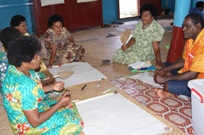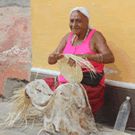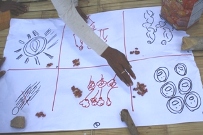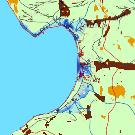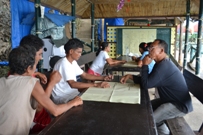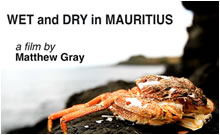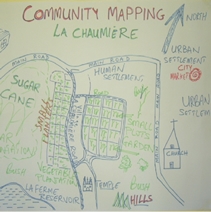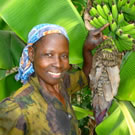Jelly Mae Moring comes from a small village on the island of Mindanao in the Philippines–but works for the Action Center for City Development in Vietnam. Knowing that she would be returning to the Philippines she decided to start a project in her family’s community to launch when she returned.
Village Women Discussing Community Needs
|
 |
“I have been starting a project in my parents’ village in the the OL 341 course, a perfect opportunity to learn how to develop a project with the people living in the community. The village is called Barangay Dita, located along the coast of Pujada Bay in Mati, the capital city of Davao Oriental, known for its copra.
|
| The village has a population of about 300 households living mainly on fishing, farming and copra-making. Some are employed in a number of small tourist resorts along the coast.” |
Village Men Discussing Community Needs
|
|
 |
“In February I sought the help of my father who has a good personal relationship with the local people and I was able to conduct a needs assessment with 4 men (fishermen & farmers) and 4 women (resort employees & housewives) – who were able to voice their community’s needs and vote on them with 10 corn seeds.”
|
|
“I tried to organize their top priorities into a simple project outline below:”
Simple project outline of problems/causes/impacts based upon the needs assessment:
Problems:
-Lack of income; poverty
Causes:
-Unemployment or seasonal/irregular employment
-Sources of income (fishing, farming and copra) are resource- and weather-dependent
New underlying cause related to climate change:
-Climate variability (unpredictable start of rainy season and unusual dry periods), and extreme weather events have reduced their harvests in both land and sea hence, reducing their income
|
An Individual Voting in Order to Prioritize Needs
|
 |
Here is an expanded version of the outline above with the addition of solution oriented programs and activities designed to address this community’s challenges.
|
| Project Outline: Problem list combined with potential interventions/activities/solutions: |
[Problem and underlying causes] (1) 300 impoverished households in a coastal village of Barangay Dita, in the southern Philippines are frequently experiencing a shortage of income caused by unemployment or irregular employment, and from (2) reduced fish catch due to their resource and weather dependency and their association with climate variability ( unpredictable rainy seasons, unusual dry periods, and extreme weather events). These which contribute to [Negative Impacts] (a) an increase in drug traffic and use among youth and other community members and (b) a decrease in the youth’s motivation to go to school and mature into prosperous adults—and contribute to a reduction in the ability of adults to lead the productive, meaningful, prosperous lives they need to leave the cycle of poverty and contribute to the development of their communities.
Project Outline: Problem list combined with potential interventions/activities/solutions
[Problem 1]. Lack of income
Alternate Income Generation Program [Solution to underlying cause: unemployment or irregular employment]:
[Activity 1]. Facilitate the organization of Women’s Development Association
[Activity 2]. Survey local/regional businesses such as local resorts, tour operators and tourism office to determine human resource/workforce and services they need on their daily operations
[Activity 3]. Establish a market link and ask the resorts, tourism office and vocational training institutes for their support in training programs for women employment in the local tourism industry
[Activity 4]. Launch vocational training workshops to fulfill business needs for products and services.
New program related to climate change
[Problem 2]. Reduced fish catch
Coastal Resource Management Program [Solution to underlying causes: Climate variability, extreme weather, and unpredictable rainy season have reduced fish catch]:
[Activity 1]. Facilitate the organization of Fishermen Association
[Activity 2]. Workshop on participatory mapping of fishing resources/areas
[Activity 3]. Environmental education campaign
[Activity 4]. Workshop on resource management and adaptation planning
[Activity 5]. Implement plan and monitor
Follow these two links to see the full example of their project outline and of a report on a participatory workshop with community members:
Project statement and project outline
Leading a Participatory Workshop
What’s happening in the region where you live?
I look forward to hearing from you.
Sincerely,
Tim Magee, Executive Director
Would you like to subscribe to this newsletter?
The Center for Sustainable Development specializes in providing sound, evidence-based information, tools and training for humanitarian development professionals worldwide. CSDi is a 501(c)(3) nonprofit organization.
We are pleased to draw your attention to a new Guide released by UNDP-UNEP. This guide provides practical, step-by-step guidance on how governments and other national actors can mainstream climate change adaptation into national development planning as part of broader mainstreaming efforts.


